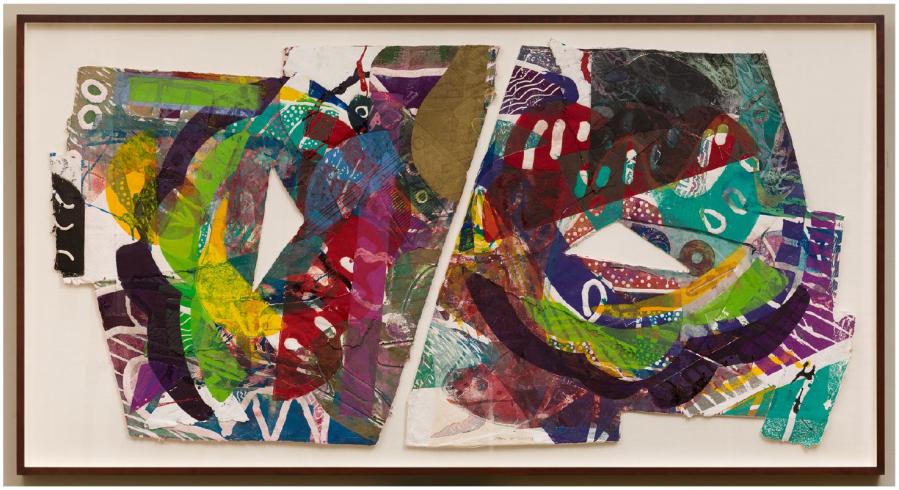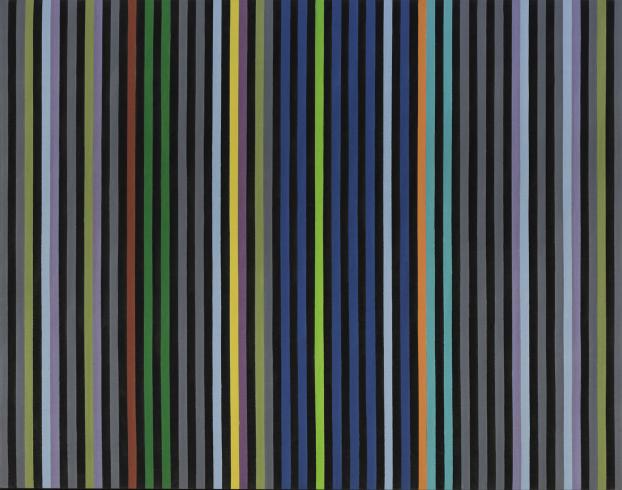More Than Meets the Eye

Part 1: Warm Up Activity
IDENTIFY: Color, Symbol, and Image
- Have your students consider the words order and chaos. For each word, each student should:
- Choose one color that best represents the essence of each word.
- Create a symbol that they think best represents the essence of the word.
- Sketch an image that they think best represents the essence of the word.
Part 2: Close Looking and Making Connections
Think, Puzzle, & Explore
- Have your students look closely at the two artworks and reflect. For each artwork, ask the students the following:
- What do you think you know about this artwork?
- What questions do you have? What puzzles you?
- What does this artwork make you want to explore?
- Have the students look back again at the two artworks.
- Which words (order and chaos) best fit each artwork? Why?
- What other descriptive words would you use to describe these artworks?
- Now, look back at the color, symbol, and image you chose to describe “order” and “chaos.” How do those compare or contrast with the artworks?
Part 3: Geometric Drawing
Just like with our varied understandings of order and chaos, we all see things differently and can come up with different ideas, even when we begin with the same simple concepts. Follow the instructions to create a work of art. Your drawing must include all of the elements below, however you are not limited solely to those elements.
- Use paper, pen or pencil, and markers, crayons, or colored pencils to create a work of art based on Sam Gilliam and Gene Davis’s ideas.
- Students’ drawing should include:
- Two parallel lines
- A biomorphic shape and a geometric shape
- One 90 degree angle that intersects one of your shapes
- Two curved lines
- One primary color and one secondary color
Part 4: Opposites Attract
- Come up with a pair of opposite words.
- Students should depict their pair of opposite words in any way they would like—make a drawing, grab physical objects, move their body kinesthetically, write a poem, or create something in any other way. Use any materials on hand.
- After everyone is done, take turns guessing the word pairs based on the artwork each person created.
Additional Context
Lesson Context
Sam Gilliam, Purple Antelope Space Squeeze, 1987
- In 1987, professor and artist William Weege invited Sam Gilliam to christen his newly founded Tandem Press. Purple Antelope Space Squeeze is the first editioned work created there.
- Process was key in the creation of the work:
- Gilliam first sent Weege a drawing of the shape he wanted the paper to be, and a mold was made according to those specifications. The initial image was a relief print using carved woodblock elements and lithography inks.
- Then, Gilliam attached handmade paper collage pieces he had painted. A variety of printing techniques followed involving inked and un-inked metal relief plates, steel and zinc etchings, and aquatint plates.
- Gilliam then hand-painted details on the surfaces to prepare them for their final printing while inks from previous runs were still wet.
- Each impression of the print bears a unique pattern because the artist placed the printing elements in different positions and inked them in a variety of colors.
Gene Davis, 65-2, 1965
- Davis often compared himself to a jazz musician who plays by ear, describing his approach to painting as “playing by eye.” Despite their calculated appearance, Davis’s stripe works were not based on conscious use of theories or formulas.
- Davis experimented with complex schemes that lend themselves to sustained periods of viewing. He suggested that “instead of simply glancing at the work, select a specific color … and take the time to see how it operates across the painting … Enter the painting through the door of a single color, and then you can understand what my painting is all about.”
- In discussing his stripe work, Davis spoke not simply about the importance of color, but about “color interval: the rhythmic, almost musical, effects caused by the irregular appearance of colors or shades within a composition.”
Excerpts from SAAM artist bio: https://americanart.si.edu/artist/gene-davis-1147
Key Terms
Biomorphic shapes: Shapes that we see in nature like flowers, animals, and clouds. They usually have curved lines and irregular angles.
Geometric shapes: Shapes such as triangles, squares, rectangles, circles, trapezoids. We don’t often see them in the natural, outside world. They usually have straight lines and angles.
Primary Color: These are colors that cannot be mixed from other colors. The primary colors are red, yellow, and blue.
Secondary Color: These are colors created by mixing two primary colors. The secondary colors are green (yellow and blue), purple (blue and red), and orange (red and yellow).

